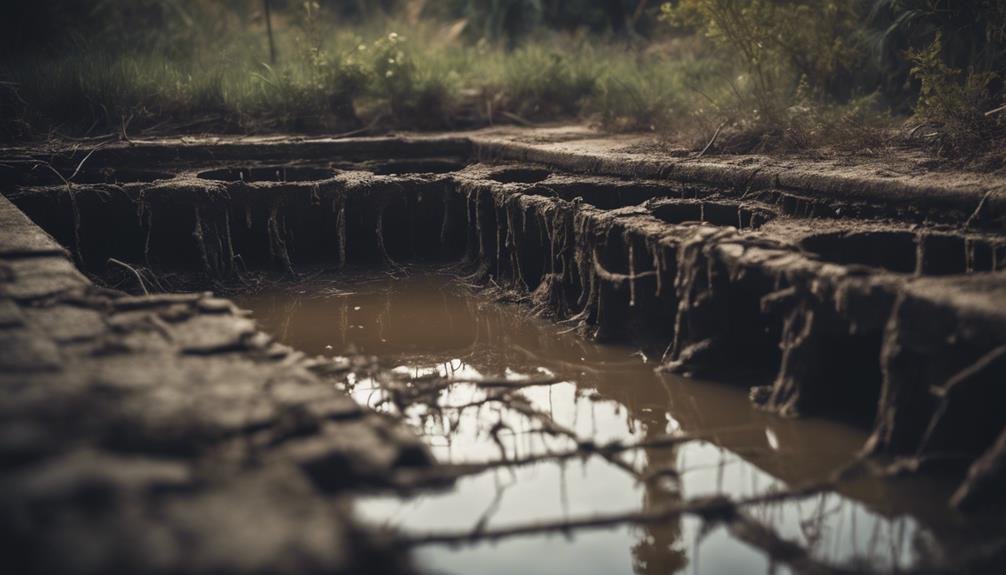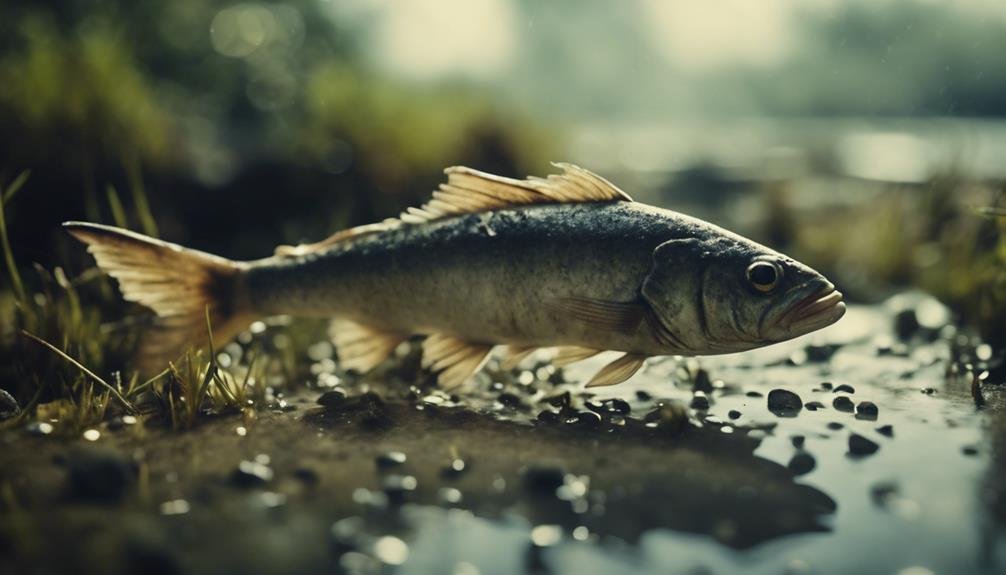When attempting DIY pond repairs, it's crucial to consider key factors to avoid costly mistakes. One common pitfall is choosing the wrong liner, which can lack durability or flexibility, leading to future leaks or damage.
Inadequate drainage systems can cause issues such as standing water and erosion, impacting the overall health of the pond. Another important aspect is ensuring the structural integrity of the pond, as weak foundations may not withstand water pressure over time.
Disrupting the ecosystem balance can harm aquatic life, highlighting the importance of understanding the delicate balance within the pond.
It's essential to have the expertise and knowledge required for complex repairs, especially when it comes to water chemistry and biological processes. Without this understanding, complications may arise, making the repair process more challenging.
By being mindful of these common pitfalls and taking the necessary precautions, DIY pond repairs can be successful and cost-effective.
Liner Selection Mistakes
Selecting the right material for repairing a pond liner is essential. It's crucial to choose a liner specifically designed for pond use as opposed to ones meant for foundation waterproofing, as the latter may lack the necessary durability and flexibility required for a pond setting.
Thickness is another key consideration that shouldn't be overlooked. Thinner liners are more susceptible to punctures and tears, leading to potential leaks and costly repairs down the line. For most residential ponds, it's advisable to opt for a liner with a minimum thickness of 45 mil (1.14 mm) to ensure durability.
Additionally, it's important to ensure that the chosen liner is compatible with the water chemistry of the pond. Some liners may deteriorate or become brittle when exposed to certain pH levels, chlorine levels, or other water treatment chemicals. Seeking guidance from a professional or conducting thorough research on the liner's specifications can help avoid issues related to water chemistry compatibility.
Inadequate Drainage Systems
When it comes to maintaining our pond, it's not just about the liner itself. Inadequate drainage systems often lead to the need for pond repairs. A proper drainage system is crucial for keeping water levels in check and preventing problems like stagnation and flooding. Insufficient drainage can result in water buildup, which can damage the liner, cause erosion, and create safety risks.
To tackle this issue, we need to assess the slope and grading around the pond to ensure water flows correctly. Common drainage issues include standing water due to poor grading or clogged drains, erosion from excessive water flow, flooding caused by insufficient drainage capacity, and stagnation due to a lack of water movement.
Solutions may involve improving grading, clearing debris, installing drainage channels, adding rip-rap for erosion control, increasing drain size, incorporating overflow systems, or using recirculating pumps and aeration for water movement.
Addressing drainage problems is essential for keeping our pond healthy and functioning well. By implementing proper grading, drainage channels, and overflow systems, we can reduce water-related issues and prolong the lifespan of our pond liners and overall pond structure.
Structural Integrity Oversights

Neglecting the structural integrity of our pond can lead to costly repairs in the future. It's crucial to ensure that the walls and base are strong enough to withstand the pressure from the water. Even small cracks or weak spots can result in significant leaks and rapid drainage of the pond.
Additionally, it's important to consider the soil composition and terrain when building a pond. Constructing on unstable ground or in erosion-prone areas can destabilize the structure, leading to cracks and potential collapse. Reinforcing the foundation with materials like gravel or concrete is essential to prevent settling or shifting.
Weather conditions and climate changes should also be taken into account to maintain the pond's integrity. Extreme temperatures, frost heaves, and heavy rainfall can put stress on the structure. Proper insulation, drainage systems, and flexible materials should be used to mitigate these environmental factors and ensure the pond's longevity.
Ecosystem Balance Disruptions
When we don't handle pond repairs properly, it can quickly disrupt the delicate balance of our ecosystem. Even small changes to the water chemistry, plant life, or aquatic creatures can set off a chain reaction that throws off the entire system.
One crucial thing to watch out for is introducing foreign substances or pollutants during repairs. This could be anything from leftover construction materials to chemicals or even incorrect disposal of old pond equipment. These intrusions can harm the aquatic life and upset the balance of nutrients and helpful bacteria in the pond.
For instance, construction debris can harm fish and block filters, while chemical runoff can be toxic to aquatic creatures and lead to excessive algae growth. Improper disposal practices can also spread invasive species and damage the habitat.
To reduce these risks, it's important to plan repairs carefully, use environmentally friendly materials, and take steps to prevent any contaminants from spreading.
Seeking advice from pond experts can also help us navigate the complex interactions within our pond's ecosystem, ensuring a successful and sustainable repair project.
Lack of Expertise

One of the main challenges in DIY pond repairs is our lack of expertise in understanding the complex dynamics of a thriving aquatic ecosystem. Without specialized knowledge, it can be difficult to diagnose and solve intricate issues that affect the delicate balance within the pond environment.
Factors like water chemistry, plant and fish compatibility, filtration systems, and biological processes require a deep understanding for effective management.
Attempting repairs or maintenance without proper expertise can disrupt the ecosystem, potentially leading to further complications or even the collapse of the pond's fragile equilibrium.
Despite diligent research, it's challenging for DIY enthusiasts to fully grasp the nuances and interconnections within the aquatic habitat. Even small adjustments or interventions can have unforeseen consequences.
To mitigate the risks associated with our limited expertise, seeking guidance from experienced professionals or consulting reputable resources is crucial. This can help safeguard the long-term health and stability of our backyard ponds, ensuring a thriving ecosystem for plants, fish, and other aquatic life.
Conclusion
When it comes to DIY pond repairs, it's crucial to approach the task with careful planning and precision. Rather than risking potential pitfalls, seeking professional expertise ensures the longevity and success of your backyard oasis while avoiding costly errors.
Investing in proper guidance from the beginning can save you time, money, and frustration down the line.
Choosing to work with professionals not only guarantees a job well done but also provides peace of mind knowing that your pond is in expert hands. By taking preventive measures and enlisting the help of experienced professionals, you can enjoy a thriving and beautiful pond without the stress of potential mishaps.
Remember, prevention is key when it comes to maintaining your pond. By entrusting the repair and upkeep of your pond to professionals, you can rest assured that you're making a wise investment in the long-term health and beauty of your outdoor space.
Don't leave the fate of your pond to chance – opt for professional guidance and ensure your oasis remains a source of joy and relaxation for years to come.

